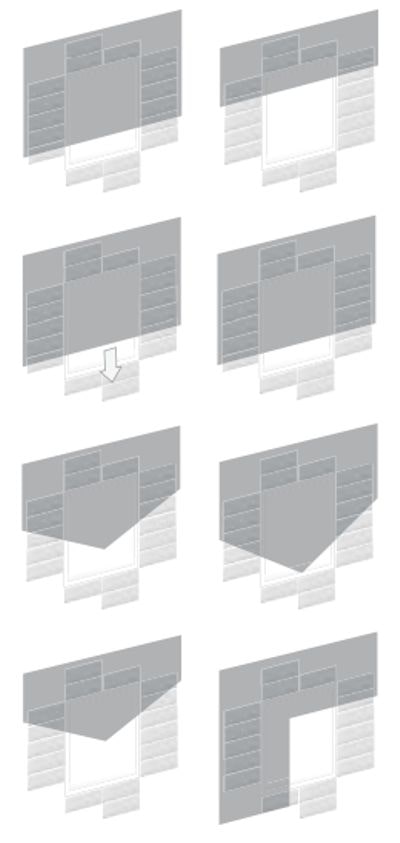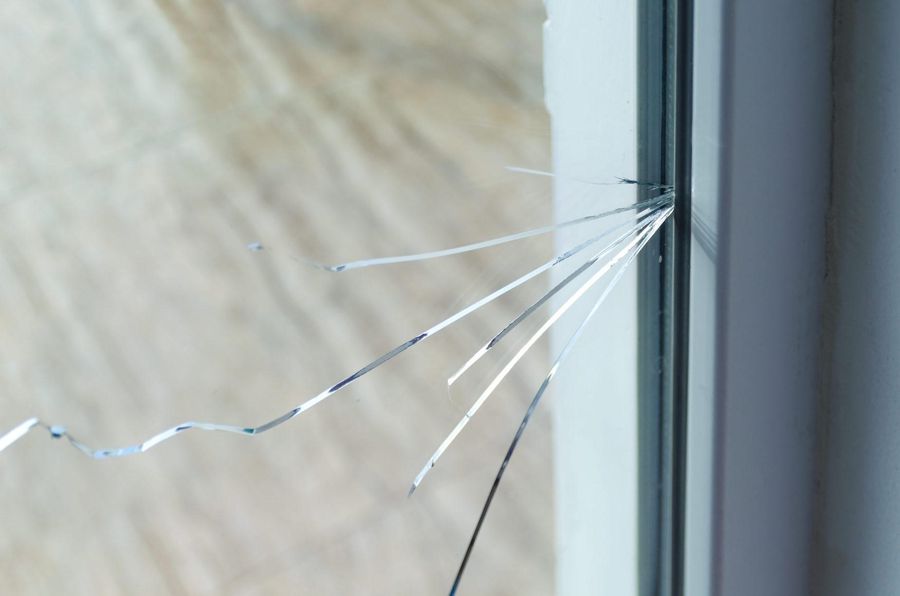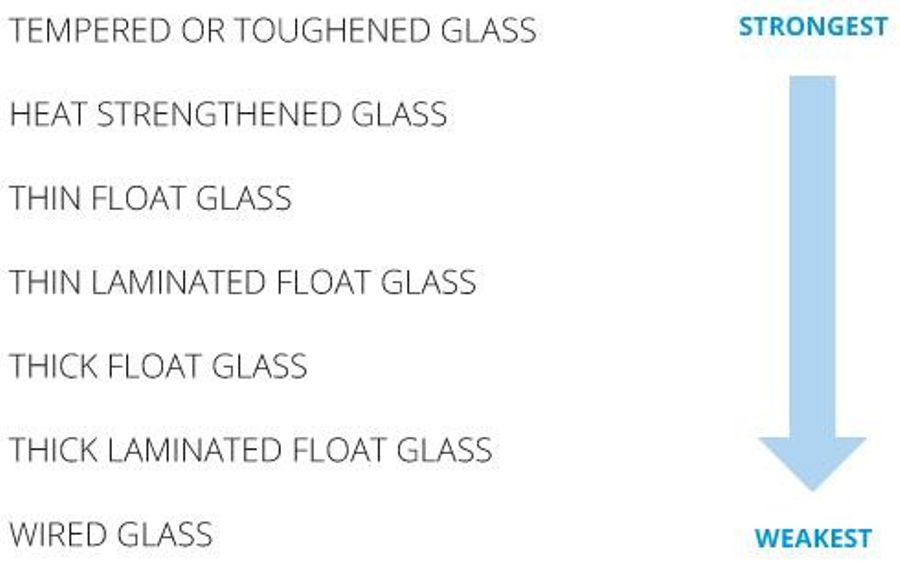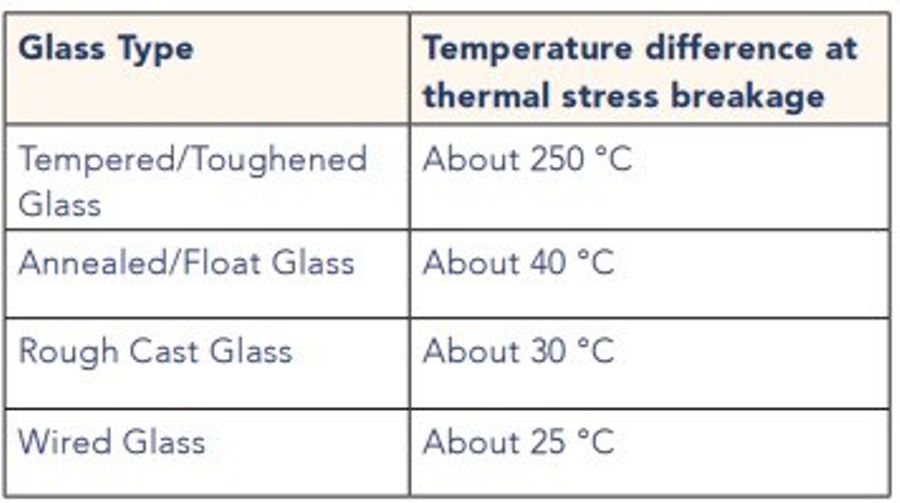During the manufacturing or the installation of the window, sometimes unseen damage can occur. This is arguably the largest cause of low stress thermal cracking.
The larger a window is, the greater the area of glass able to absorb the sun’s heat in comparison to the cooler edges. The larger the area of glass is, the higher the thermal stress on the glass’s edges.
While the properties of glass are well-documented and can be taken into consideration during the design phase of a project, planning can be more problematic for exterior shading. External shading devices have different kinds of impact on glass depending on their size, shape, and location.
● Shading that covers 50% or less of the glass surface is worse than a device that shades a much greater percentage of the glass.
● Mobile shading is better than static shading.
● L or V shaped devices create higher thermal stress.

Interior Shading:
Blinds and curtains are a thermal stress risk factor that occur more often in residential areas than in commercial ones and have varying impacts on the glass depending on colour, type, and a few other factors. The effect that curtains and blinds have on thermal stress depends on how much solar energy they reflect on the glass. Light colours reflect heat much better than dark colours. Open weave fabric helps heat pass through, while closed weave fabric traps heat more efficiently.
Heating & Cooling:
Artificial heating or cooling devices should be mounted in a place where they will not blow hot or cold air directly on the windows, or the space between the glass and the curtains or blinds. It can subject the glass to varying temperatures and therefore increase the thermal stress.
Glazing Method:
Usually, common glazing methods do not affect the risk of thermal stress. The exception to this is structural glazing. It reduces thermal stress by lowering the temperature difference between the glazed edge and the centre of the glass. Care should be taken when using any glazing method that either encourages the transfer of
heat away from the glass or covers unusually large amounts of the edges of the glass.
Additional factors that may influence thermal cracks:
● Excessive coverage of the glass edge by the frame.
● Heat-absorbing films attached to the glass after installation.
● Glass framing that is in direct contact with concrete or other materials contributing to the cooling of the glass edge.
● If the airflow from cooling or heating vents is not directed away from the glass.
Typical conditions that can cause thermal cracks:
● A sunny, cold winter day. Usually, part of the glass may be shaded under an overhang, a neighbouring building, by a tree, or behind a corner of the building.
● Something placed on the inside of the windows, for example a sign or curtains, can also cause thermal stress.
● A hot, sunny, summer day. This is less common but can occur if heat is reflected through the windows by blinds or drapes.
● Cool, cold mornings. The centre of the glass absorbs the heat while the edges remain cold.
Managing the risk of thermal stress:
The risk of thermal stress can be lowered or even eliminated by keeping in mind the factors mentioned above or by heat strengthening the glass. Heat strengthening increases the strength of the glass, which allows it to resist thermal stress.
A window can be fine for a couple of years, and then, under the right conditions, suddenly crack. This is not something that is warranted because there is no control over the environmental conditions that caused the problem.
Many glass manufacturers' websites provide detailed information on thermal breakage. Using the available information, the glass installer can assess the risks prior to installation. In some cases, redesign may be possible, eliminating the need for heat strengthening and thereby saving unnecessary expense.
Recommendations:
● If you want to use a product prone to thermal stress conditions as mentioned above, have a thermal assessment completed.
● If you are concerned about thermal stress and breakage, use heat-strengthened or toughened glass products.
● Speak with your glass supplier and get their advice.
● Make sure care is taken on the edges of high-performance glass products, which are more prone to thermal breakage.
● Ensure the edge quality of the products are of a high-quality finish; a good clean-cut, fully polished edge is best. Glass with damaged edges takes less stress to break than clean cut glass.
--
It is the customer's responsibility to check suitable blind types for the window glass they would like to treat with their window supplier to avoid any damages, such as cracks, due to heat build-up between the window glass and blinds. We have no tools to measure window glass thickness or identify the window glass types customers own.



